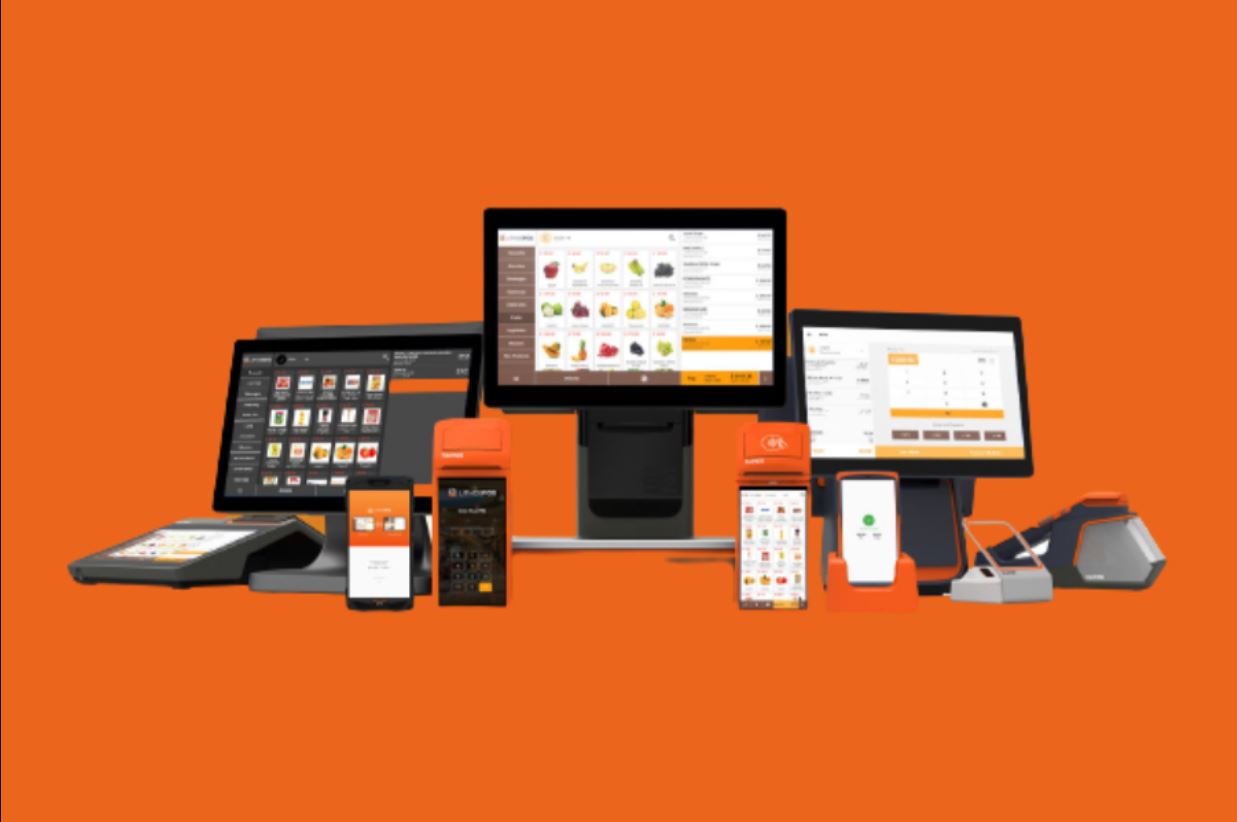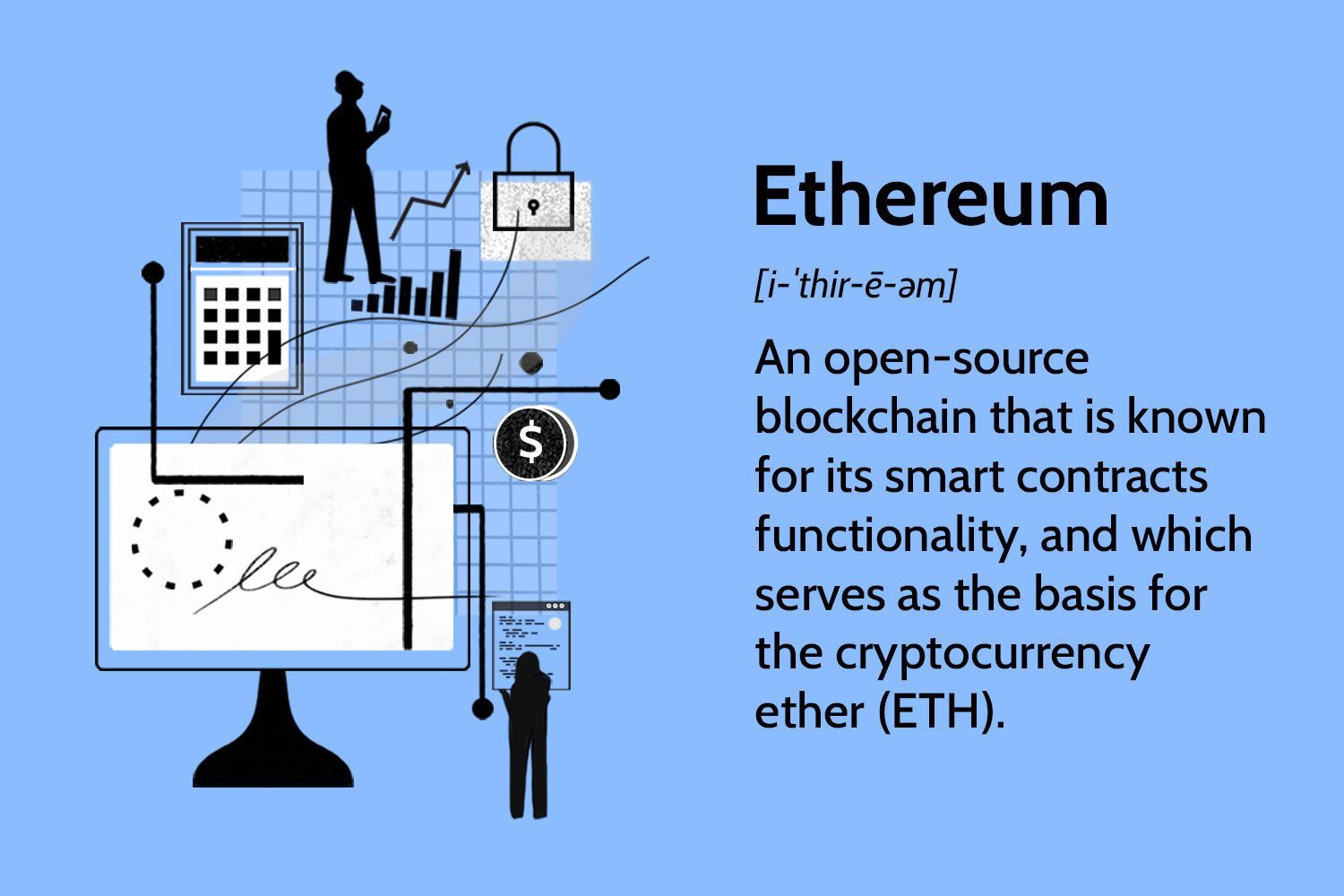Introduction
Welcome to the world of Point of Sale (POS) systems, where businesses can efficiently manage sales, track inventory, and provide smooth transactions to customers. In today’s fast-paced retail environment, having a reliable and user-friendly POS system is crucial for businesses of all sizes.
In this article, we will guide you through the process of building a POS system using the Java programming language. Whether you are a beginner seeking to expand your coding skills or an experienced developer looking to venture into the world of retail software solutions, this article will provide you with the necessary insights and steps to get started.
A POS system typically consists of hardware components, such as barcode scanners, cash registers, and receipt printers, as well as software components that handle various tasks, including sales management, inventory tracking, and generating reports. In this article, our focus will be on developing the software part of the POS system.
By the end of this article, you will have a solid understanding of how to create a functional and efficient POS system using Java. We will cover the fundamental aspects of building such a system, from setting up the development environment to implementing key features like product database management, sales handling, payment processing, and user authentication.
It is important to note that while this article serves as a guide to building a basic POS system, the actual implementation and customization of a POS system will differ based on the specific needs and requirements of your business. This article will provide you with a strong foundation upon which you can build and customize your own POS system to suit your unique business needs.
So, without further ado, let’s dive into the world of Java programming and embark on the journey of building a powerful and efficient POS system that will streamline your business operations and enhance the overall customer experience.
Setting Up the Development Environment
Before we start developing our POS system in Java, we need to ensure that our development environment is properly set up. Here are the key steps to follow:
- Install Java Development Kit (JDK): Make sure you have the latest version of JDK installed on your system. JDK provides the necessary tools and libraries to develop Java applications. You can download JDK from the official Oracle website and follow the installation instructions for your specific operating system.
- Choose an Integrated Development Environment (IDE): There are several IDEs available for Java development, such as Eclipse, IntelliJ IDEA, and NetBeans. Select the one that best suits your preferences and install it on your system. IDEs provide a user-friendly interface and helpful features that enhance productivity in software development.
- Create a New Project: Open your chosen IDE and create a new Java project for your POS system. This will serve as the foundation for your development journey. Give your project a meaningful name and specify the desired location to save your project files.
- Add Required Dependencies: Depending on the specific requirements of your POS system, you may need to include additional libraries or dependencies in your project. These libraries can be added through your IDE’s build tool or manually by downloading the respective JAR files and linking them to your project.
- Set Up a Version Control System: It is highly recommended to use a version control system, such as Git, to track changes in your codebase and collaborate with other developers. Set up a repository to store your project files and configure your IDE to work seamlessly with the version control system.
- Create a Development Database: For testing and development purposes, it is a good idea to set up a local database to mimic the functionalities of a product database in a real-world POS system. You can use popular database systems like MySQL or PostgreSQL and create the necessary tables to store product information, sales records, and other relevant data.
By following these steps, you will have a well-equipped development environment to start building your POS system. It is crucial to ensure that all the necessary software, tools, and dependencies are installed and configured properly to avoid any hindrance during development.
Now that our development environment is set up, we can move on to the next step: creating the user interface for our POS system.
Creating the User Interface
The user interface (UI) is a crucial component of any POS system as it directly interacts with users and facilitates smooth and intuitive user experiences. In this section, we will explore the steps involved in creating an efficient and user-friendly UI for our Java-based POS system.
Here are the key considerations to keep in mind:
- Identify User Needs: Before diving into the UI design, it is essential to identify the specific needs of the users who will be interacting with the POS system. Consider factors such as the type of business, the range of products, and the tasks users need to perform on the system.
- Create Mockups and Wireframes: To visualize the UI design, you can start by creating mockups and wireframes using design tools like Sketch, Figma, or even simple pen and paper. This step helps in clarifying the layout, navigation, and overall structure of the user interface.
- Design Consistency and Intuitiveness: Ensure that the UI elements, such as buttons, text fields, and menus, are consistent throughout the system. Use a clear and intuitive layout that allows users to quickly understand the functionalities and navigate seamlessly through the POS system.
- Consider Usability and Accessibility: Keep in mind the different devices and platforms your POS system may be used on. Design the UI to be responsive and adaptable to various screen sizes. Additionally, consider accessibility guidelines to make the system usable for individuals with disabilities.
- Implement UI Components: Once you have finalized the design, it’s time to implement the UI components in Java. You can use libraries like JavaFX or Swing to create the various UI elements, such as buttons, labels, and text fields. These libraries provide extensive tools and resources to enhance the appearance and functionality of the UI.
- Handle User Interactions: Implement event listeners and handlers to capture user interactions with the UI. For example, when a user clicks the “Add to Cart” button, the system should respond accordingly by adding the selected product to the shopping cart.
- Perform User Interface Testing: Once the UI is implemented, conduct comprehensive testing to identify any issues or usability flaws. Test the system on different devices and ensure that all UI elements work as expected and provide a seamless user experience.
By following these steps, you will be able to create a visually appealing and user-friendly UI for your Java-based POS system. Remember to focus on the specific needs of your users and ensure that the UI design enhances their overall experience in using the system.
Now that we have our UI in place, it’s time to move on to the next step: implementing the product database for our POS system.
Implementing the Product Database
The product database is a fundamental component of any POS system as it stores crucial information about the products available for sale. In this section, we will explore the steps involved in implementing the product database for our Java-based POS system.
Here are the key steps to follow:
- Choose a Database Management System: Select a suitable database management system (DBMS) to store and manage the product data. Common choices include MySQL, PostgreSQL, or SQLite. Consider factors such as scalability, reliability, and ease of integration with Java. Install the chosen DBMS and ensure it is up and running.
- Design the Product Database: Define the structure of the product database by identifying the necessary tables and their relationships. Create tables for storing product details such as name, price, stock quantity, and any other relevant attributes. Establish relationships between tables if required, such as linking products to categories or suppliers.
- Create Database Access Object (DAO) Classes: Implement DAO classes that will handle the interactions with the product database. These classes will contain methods for CRUD operations (Create, Read, Update, Delete) to add, retrieve, update, and delete product records from the database. Use SQL queries or an Object-Relational Mapping (ORM) tool like Hibernate to interact with the database.
- Integrate the DAO Classes into the Application: In your Java POS system, import the DAO classes and use their methods to perform database operations. For example, when a user adds a new product to the system, invoke the appropriate method from the DAO class to insert the product details into the database.
- Implement Error Handling and Data Validation: Handle potential errors and exceptions that may occur during database operations. Implement data validation mechanisms to ensure that only valid and accurate product information is stored in the database. Validate and sanitize user input to prevent common security vulnerabilities such as SQL injection.
- Test and Fine-Tune the Product Database: Conduct thorough testing to ensure the proper functioning of the product database. Test various scenarios such as adding, updating, and deleting products, as well as retrieving product information. Identify and fix any issues or performance bottlenecks for a reliable and efficient database implementation.
By following these steps, you will have a fully functional product database for your Java-based POS system. This database will be the backbone of your system, allowing you to manage product inventory, retrieve product details, and perform essential operations for the sales and inventory management functionalities.
Next, we will explore the next essential step in building our POS system: handling sales and inventory.
Handling Sales and Inventory
One of the core functionalities of a POS system is efficiently managing sales and inventory. In this section, we will explore the steps involved in handling sales and inventory in our Java-based POS system.
Here are the key steps to follow:
- Shopping Cart Management: Implement a shopping cart feature that allows users to add products, modify quantities, and remove items before finalizing the sale. Use data structures such as lists or arrays to store the selected products and their quantities. Update the shopping cart in real-time as the user makes changes.
- Inventory Tracking: Create mechanisms to track the available stock for each product. When a sale is made, update the stock quantity accordingly. Implement checks to ensure that stock is not sold beyond its available quantity to prevent overselling. Consider implementing low-stock alerts or automatic reordering functionality.
- Sales Transaction Handling: Implement the necessary functionalities to finalize a sale. Calculate the total cost of the items in the shopping cart, including any discounts or taxes. Handle different payment methods, such as cash or card, and calculate change if necessary. Update the sales records and generate customer receipts if required.
- Refunds and Returns: Implement functionalities to handle refunds and returns. Allow users to initiate return requests and handle the inventory adjustments accordingly. Update the sales records and refund the payment as per your business policies.
- Sales Reports and Analytics: Implement reporting and analytics features to provide valuable insights into sales performance. Generate reports that provide data on top-selling products, sales trends, and other relevant metrics. Utilize data visualization techniques to present information in a visually appealing and easy-to-understand manner.
- Integration with Barcode Scanners and Receipt Printers: If your business utilizes barcode scanners and receipt printers, implement the necessary functionalities to integrate them with your POS system. Allow users to scan barcodes to add products to the shopping cart and print receipts for customers.
- Real-Time Synchronization: If your POS system is used in a multi-user environment, consider implementing real-time synchronization of sales and inventory data across devices. This ensures that all users have up-to-date information and prevents conflicts or inconsistencies in data.
By following these steps, you will have a comprehensive system for handling sales and managing inventory in your Java-based POS system. This functionality is vital for accurate and efficient transaction processing, ensuring that your business runs smoothly and efficiently.
Next, we will explore how to calculate total sales and generate reports for better business insights.
Calculating Total Sales and Generating Reports
Calculating total sales and generating reports is a crucial aspect of a POS system as it provides valuable insights into the business’s performance. In this section, we will explore the steps involved in calculating total sales and generating reports in our Java-based POS system.
Here are the key steps to follow:
- Sales Record Tracking: Implement a mechanism to track and store sales records. Each completed sale should be recorded, including details such as the date, time, products sold, quantities, and prices. This information will serve as the basis for generating accurate sales reports.
- Summing Up Total Sales: Retrieve the sales records from the database and calculate the total sales by summing up the prices of all the products sold. Consider any applicable discounts, taxes, or additional charges that may affect the final sales value.
- Generate Sales Reports: Implement functionality to generate reports based on the sales data. The reports can include metrics such as total sales for a specific time period, sales by product category, or top-selling products. Consider filtering options and allow users to customize the reports based on their specific requirements.
- Data Visualization: Present the sales data in a visually appealing and understandable format using charts, graphs, or tables. Utilize libraries like JFreeChart or JavaFX’s charting capabilities to create visual representations of the sales data. This enhances the readability and aids decision-making based on the generated reports.
- Scheduling and Automated Reporting: Implement the functionality to schedule automated report generation. Users can set specific time intervals, such as daily, weekly, or monthly, for the system to automatically generate and send reports to the desired recipients, enhancing efficiency and timely decision-making.
- Exporting and Sharing Reports: Provide options to export the generated reports in different formats, such as PDF or Excel, to allow users to save, print, or share the reports as needed. Implement functionality to email the reports directly from the POS system to relevant stakeholders.
- Data Security: Ensure that the sales data and generated reports are stored securely and protected from unauthorized access. Implement appropriate authentication and authorization mechanisms to safeguard sensitive business information.
By following these steps, you will have the ability to accurately calculate total sales and generate comprehensive reports, enabling you to gain valuable insights into your business’s performance and make informed decisions.
Next, we will explore the functionality of accepting payment and providing change in our Java-based POS system.
Accepting Payment and Providing Change
Accepting payment and providing change is a critical functionality of any POS system. In this section, we will explore the steps involved in implementing this functionality in our Java-based POS system.
Here are the key steps to follow:
- Select Payment Methods: Identify the payment methods that your POS system will support. Common options include cash, credit/debit cards, mobile wallets, or other electronic payment methods. Take into consideration the integration required with third-party payment gateways or hardware devices.
- Calculate Total Amount: Retrieve the total cost of the items being purchased from the shopping cart. Include any applicable taxes, discounts, or additional charges. Make sure to display the total amount to the customer for confirmation.
- Accept Payment: Implement the necessary functionality to accept payment from the customer based on the selected payment method. For cash payments, prompt the cashier to enter the amount received. For electronic payments, integrate with the appropriate payment gateway or device to securely process the payment.
- Verify Payment: Implement mechanisms to verify and validate the payment. For cash payments, compare the amount received with the total amount and handle any discrepancies. For electronic payments, ensure that the payment is successfully processed and verified by the payment gateway or device.
- Calculate Change: If the customer pays with cash and the amount received is greater than the total amount, calculate the change to be returned. Display the change amount to both the cashier and the customer for transparency.
- Print Receipt: Generate and print a receipt that includes details of the transaction, such as the items purchased, the total amount, the payment method, and the change given. Include any other necessary information, such as store details or return policy.
- Update Sales Records: Update the sales records in the database to reflect the completed transaction. Store details such as the payment method used, the amount paid, and any change given. This information will be valuable for generating accurate sales reports and for future reference.
- Handle Failed Payments: Implement appropriate error handling mechanisms to handle failed or declined payments. Provide clear error messages to the customer and allow for alternative payment methods or manual entry of card details, if applicable.
By following these steps, you will have a fully functional payment processing system in your Java-based POS system. Customers will be able to make payments for their purchases, and you can ensure a smooth transaction process while providing accurate change and generating customer receipts.
Next, we will explore how to add functionality for discounts and promotions in our POS system.
Adding Functionality for Discounts and Promotions
Discounts and promotions play a crucial role in attracting customers and boosting sales for a business. In this section, we will explore the steps involved in adding functionality for discounts and promotions in our Java-based POS system.
Here are the key steps to follow:
- Identify Discount Types: Determine the different types of discounts and promotions your business offers, such as percentage-based discounts, fixed amount discounts, buy-one-get-one (BOGO) offers, or special promotional prices. Identify the conditions or requirements for each type of discount.
- Implement Discount Calculation: Integrate code to calculate the discounts based on the chosen discount type. Adjust the total cost of the items in the shopping cart accordingly. Consider any limitations, such as maximum discount amounts or restrictions on specific products or categories.
- Apply Promotions: Implement functionality to apply promotional prices or BOGO offers. Modify the prices or quantities of the eligible items in the shopping cart to reflect the promotion. Validate and handle any restrictions, such as minimum purchase amounts or time-limited promotions.
- Manage Coupon Codes: If your business uses coupon codes for discounts, implement functionality to accept and verify coupon codes provided by customers. Validate the codes and apply the associated discounts to the shopping cart. Handle scenarios such as expired or invalid coupon codes.
- Display Discounts: Clearly display the discounts and promotions applied to the customer’s purchase. Include the original prices, the discounts applied, and the adjusted prices in the shopping cart or order summary. This transparency helps customers understand the value they are receiving.
- Coupon and Promotion Management: Implement an interface for managing coupons and promotions in the POS system. Allow administrators to create, edit, and deactivate coupons or promotions. Provide options to set the validity period, usage limits, and restrictions for each coupon or promotion.
- Record Discounts and Promotions: Update the sales records to reflect the discounts and promotions applied. Store the details of the discounts, such as the type, amount, and reason, for accurate reporting and analysis.
- Test and Fine-Tune: Conduct thorough testing to ensure the proper functionality of the discount and promotion features. Test various scenarios, including multiple discounts, complex promotions, and coupon code combinations, to validate the accuracy and consistency of the calculations.
By following these steps, you will have added powerful functionality for discounts and promotions in your Java-based POS system. Customers will be able to enjoy special discounts and promotions, increasing their satisfaction and boosting sales for your business.
Next, we will explore how to implement user authentication to enhance security and control access to the POS system.
Implementing User Authentication
User authentication is a crucial security feature in a POS system as it ensures that only authorized users can access and perform operations within the system. In this section, we will explore the steps involved in implementing user authentication in our Java-based POS system.
Here are the key steps to follow:
- Identify User Roles: Determine the different roles or user types that will access the POS system, such as cashiers, managers, or administrators. Define the specific permissions and privileges associated with each role.
- Create User Database: Implement a user database that stores user credentials securely. Include fields for username, password, and role. Hash passwords using a secure hashing algorithm, such as bcrypt, to protect sensitive information.
- User Registration: Implement functionality to register new users. Collect relevant user information and store it securely in the user database. Validate and handle any duplicate or invalid entries to maintain data integrity.
- User Login: Develop a login mechanism that prompts users for their credentials. Verify the entered username and password against the user database. Implement appropriate error handling for invalid or incorrect credentials.
- Session Management: Implement session management to keep track of authenticated users. Generate and store a session token upon successful login. Validate the session token for subsequent requests to ensure continuous user authentication during the session.
- Access Control: Implement access control mechanisms based on user roles and permissions. Restrict certain functionalities or screens based on the user’s role to ensure that each user can only perform operations relevant to their role.
- Password Reset: Provide functionality for users to reset their passwords in case they forget or need to change their credentials. Implement a secure password reset process that includes verification steps and the generation of temporary passwords.
- Logging and Auditing: Implement logging and auditing mechanisms to track user activities and system events. Store logs for future reference and security analysis. Monitor and analyze the logs to detect any suspicious or unauthorized activities within the POS system.
- Enhance Security Practices: Implement additional security measures, such as enforcing password complexity requirements, implementing secure communication protocols, and regularly updating and patching the system for any security vulnerabilities.
By following these steps, you will have implemented robust user authentication in your Java-based POS system, ensuring that only authorized personnel can access and perform operations within the system. This creates a secure environment for data and transactions, protecting sensitive information and maintaining the integrity of your POS system.
Finally, we have reached the end of our journey in building a POS system in Java. Now you have a solid foundation to continue customizing and enhancing the system to meet your specific business needs.
Enhancing the User Experience
Enhancing the user experience is essential for a successful POS system as it directly impacts user satisfaction and efficiency. In this section, we will explore some key strategies and considerations to enhance the user experience in our Java-based POS system.
Here are the key steps to follow:
- Intuitive and Responsive UI: Continuously refine and optimize the user interface to make it more intuitive and user-friendly. Pay attention to factors such as readability, ease of navigation, and visual aesthetics. Ensure that the UI is responsive and adapts well to different screen sizes and devices.
- Simplified Workflows: Streamline the workflows within the POS system to minimize unnecessary steps and reduce the time required to perform tasks. Analyze each step of the user journey and identify opportunities for simplification and automation. Seek feedback from users and make iterative improvements based on their input.
- Quick Access to Common Functions: Identify the most frequently used functions in the POS system, such as adding products to the cart or processing payments. Design the UI in such a way that these functions are easily accessible with minimal effort. Consider using shortcut keys or customizable toolbars to facilitate faster operations.
- Clear and Concise Messaging: Use clear and concise messaging throughout the system to guide users and provide relevant information. Avoid technical jargon and ambiguous language. Use helpful tooltips, informative error messages, and instructional prompts to assist users in using the system effectively.
- Enhanced Search Functionality: Implement powerful search functionality to allow users to quickly find products, transactions, or other relevant information within the POS system. Enable filters, sorting options, and advanced search features to enhance search accuracy and efficiency.
- Contextual Help and Documentation: Provide contextual help and documentation within the POS system to assist users in understanding its features and functionalities. Include tooltips, on-screen guides, and easily accessible documentation that users can refer to whenever they need assistance.
- Regular Updates and Bug Fixes: Continuously improve the system by releasing regular updates and bug fixes. Address user feedback, fix usability issues, and implement new features or enhancements that meet user needs. Keep the system up to date with the latest technologies and industry standards.
- Prompt and Responsive Support: Offer prompt and responsive support channels for users to seek assistance or report issues. Provide multiple contact options, such as email, phone, or live chat, and ensure that support staff are knowledgeable and equipped to address user inquiries effectively.
- Usability Testing and User Feedback: Conduct regular usability testing sessions to gather feedback from users. Observe how users interact with the POS system, identify pain points, and gather suggestions for improvement. Incorporate user feedback into future iterations of the system to continually enhance the user experience.
By following these steps, you will be able to enhance the user experience in your Java-based POS system, leading to increased user satisfaction, improved productivity, and a more seamless and enjoyable user journey.
Congratulations on completing the journey of building a powerful and efficient POS system in Java. With your solid foundation, customize and further refine the system to fit your specific business requirements and continue to adapt and evolve it as your business grows.
Conclusion
Building a POS system in Java requires careful planning, attention to detail, and a sound understanding of both software development principles and the specific needs of your business. Throughout this article, we have explored the essential steps involved in developing a functional and efficient POS system.
We started by setting up the development environment, ensuring that the necessary tools and libraries are installed and configured properly. Then, we moved on to creating a user-friendly interface, allowing users to navigate the system effortlessly and perform their tasks without confusion or friction.
With the user interface in place, we implemented the product database to store and manage product information, enabling efficient sales and inventory management. We then explored handling sales and inventory, ensuring accurate transactions, and tracking stock levels to keep the business running smoothly.
Generating sales reports and calculating total sales provided valuable insights into business performance, allowing data-driven decision-making. We also integrated payment processing, allowing customers to complete transactions seamlessly while ensuring the security and accuracy of the process.
Discounts and promotions added enticing offers to attract customers and boost sales, providing flexibility in pricing strategies. Additionally, implementing user authentication enhanced security and ensured that only authorized personnel can access and manage the system.
Finally, we discussed the importance of enhancing the user experience, from intuitive UI design to continuous improvement, feedback collection, and responsive support. By prioritizing user experience, businesses can maximize efficiency, customer satisfaction, and overall success.
Remember, this article provides a foundation on which you can build and customize your own POS system. Each business is unique, and you may need to adapt and tailor the system to fit your specific requirements and industry standards.
We hope this article has provided you with valuable insights and guidance in developing a robust POS system in Java. Embrace the possibilities offered by technology, continually seek improvement, and stay up to date with trends and innovations in the retail industry to ensure your POS system remains efficient and competitive.
Good luck with your POS system development journey!

























